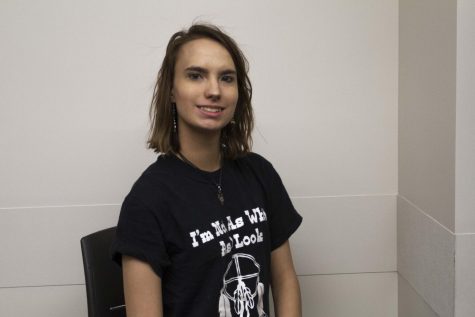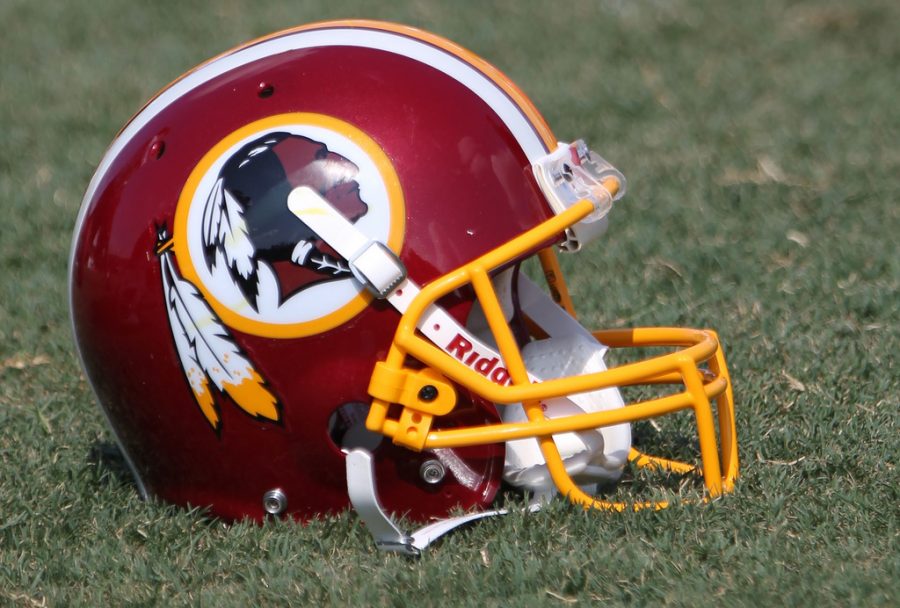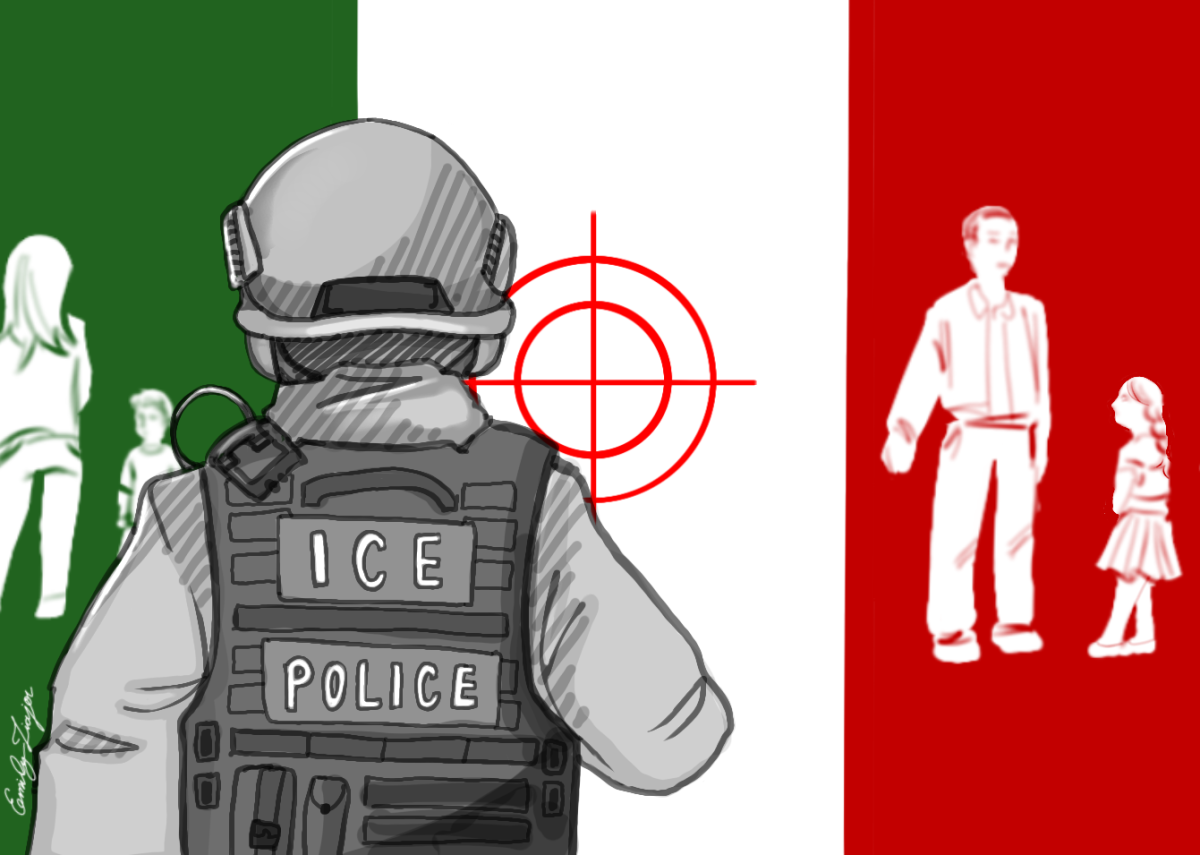Exploring the inherent racism in America’s Native American mascots
“Hail to the Redskins! Braves on a Warpath! Scalp ‘em!”
Washington Redskins Training Camp August 4, 2011
February 8, 2018
The wounds of cultural genocide are not easily healed. Luckily, as the writers of history, the dominant culture, we have the privilege to bestow upon our victims our greatest honour, naming our athletic teams and academic institutions in the reverence of a caricature of their brutal savagery. Forget the Trail of Tears, forget Wounded Knee, and forget centuries of forced cultural assimilation. To the people with the sun-stained faces goes the cheers and adulation because the Redskins triumphed over the Patriots in a game of football.
Recently after intense deliberation, team owner Paul Dolan and baseball commissioner Rob Manfred have come to an agreement. The Cleveland Indians will drop their Chief Wahoo mascot from team uniforms beginning with the 2019 season. The cartoonishly racist symbol has been used since 1947, prompting Native American groups to protest outside of annual home openers in aspirations of getting both the mascot and the team name abolished.
Groups such as the National Congress of American Indians (NCAI), the nation’s oldest, largest and most representative indigenous people’s organization, has long opposed derogatory and harmful stereotypes of their people represented in sports, media and popular culture. Advocating civil rights equity, the denigrating depictions dehumanize and belittle their people perpetuating a psychologically damaging image of an inferior and savage people. Illustrating a correlation between the derogatory mascots and the alarmingly high rate of violence and hate crimes directed towards Native Americans, the NCAI emphasizes how negative stereotypes can permeate culture emboldening miseducated feelings of superiority by the dominant culture, and feelings of subservient victimization and alienation by Native Americans, especially dangerous to the malleable impressions of the highly populous indigenous youth.

In accordance with NCAI’s depicted correlation, College of DuPage student Sam Thompson, proudly effusing Potawatomi, Ojibwa, and Ottawa lineage, and a participant of the college’s Native American Studies Committee, corroborates when the image of Native Americans is dehumanized, it fosters an environment ripe for acts of violence and discrimination perpetrated by the dominant cultural aggressors. She goes on to preach the words of Native American activist and proud member of the Cheyenne people, Suzan Harjo, who argued, “you strip the person of humanity and they’re just an object, and you can do anything.” Such discrimination reinforces the second-class citizenry Native Americans have endured over the centuries of settlers rule, from being denied citizenship until the Indian Citizenship Act of 1924 (over half a century after the Fourteenth Amendment granted citizenship to African Americans), to the prolongation of states denying suffrage in various ways until the Voting Rights Act of 1965.
Many academic and athletic institutions created their offensive mascots in an era when bigotry was more tolerated by the dominant culture. In exploring the level of derogatoriness derived from disparate mascots, Thompson elaborates how besides squaw, “Redskin” is the most hate filled slur directed towards Native Americans. Paralleling NCAI’s view that for much of the 20th century the term “Redsk*n” was used interchangeably in culture with the word “savage” to portray a misleading and denigrating image of the Native American. Thompson along with multiple Native American and civil rights organizations advocate for the complete removal of the Washington Redsk*ns name and emblem.
Thompson further advocates for the removal of the Cleveland Indians team name and mascot, and the removal of any other academic or athletic institutions taking advantage of and offensively misrepresenting Native Americans. Where the lines of distinction become murkier is when profiteering teams try to rectify their caustic depictions by issuing in policies to honour the stereotyped they’ve been taking advantage of. Current examples include Florida State University honouring and incorporating indigenous people and their traditions to the athletic festivities, and the Chicago Blackhawks honouring respected individuals of the Native community alongside military members during the national anthem.
However the problem that is not eradicated with this strategy of appeasement is the gross level of cultural misappropriation exhibited by the fans. Sometimes subtlety offensive such as beating on tom-toms, or a little less subtle war chant or tomahawk chop, or the egregious dressing in Native American attire or face-paint. Until serious steps addressing the education needed to combat denigrating natives by depicting cultural stereotypes are implemented, fans will habitually and instinctively fall into the caricatured depictions of natives that have been driven into their subconscious by means of a bigoted and combative dominant culture.
According to the NCAI, through the struggle of advocacy groups, more than two-thirds of over 2,000 “Indian” references in sports have been eliminated over the past 35 years. In 2005, the NCAA adjudicated an extensive policy to remove harmful “Indian” mascots. Amongst the Civil Rights wave in the late 60’s and early 70’s, Stanford and Dartmouth established the precedent for changing their mascots to less offensive entities. More recently, Illinois removed their Chief Illiniwek official mascot in 2007, and North Dakota removed their Fighting Sioux mascot in 2012.
Opposition from nostalgic conservatives and fans who see their mascots as a cultural embodiment of their cities and the very lives they lead, have contributed to the strident backlash against the civil movement. Arguing the mascots have interwoven themselves to become a fabric of their daily lives and the lives of their family and ancestors, change has met ardent resistance every step of the way.
Further opposition comes from the profiteering owners who worry about the monetary impacts of such change. Even after the Cleveland Indians retire their offensive Chief Wahoo mascot, the team will continue ownership of the trademark and still sell merchandize featuring its depiction across the city. In 1999 and 2014 the U.S. Patent Office decreed the term “Redskin” is disparaging to Native Americans and is therefore not entitled to taxpayer-financed copyright protection. However, last year the Supreme Court in a case ostensibly about an American-Asian band named The Slants adjudicated that entities formed around slurs (such as “Redskins”) cannot be revoked trademark protection just because some find it offensive.
As the battle wages on, proper steps in educating our youth to understand our past racial transgressions must be implemented to liberate cultural equity into our society. Absolving our history and the implications of our believed racial superiority cannot be ignored. Proper education free from stereotypical or caricatured depictions of our nation’s first people and their history must be embraced across our schooling systems. Education and understanding are the only ways to appease the wounds of our past and transform us into a new society of symbiotic equality to better our diverse nation and its many citizens.
* To support the cause, visit ncai.org (National Congress of American Indians), explore changethemascot.org, or visit College of DuPage’s Native American Studies Committee’s Facebook page




















